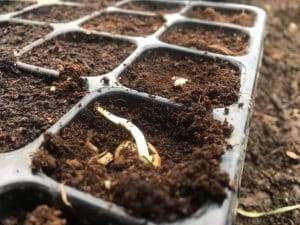Preparing the Beds
The end of winter is often more predictable than this year, but don’t worry, you can still start on your garden! Even with the extra wet soil, we are preparing the ground for seed at the Green Living and Sustainability (GLAS) Community Garden. Throughout the winter, we covered the beds with cardboard and mulch. Since then, we have dug it into the soil to condition it once it breaks down. This is also a great trick for preventing an invasion of weeds! As you begin preparing the soil for seeds, place your hand on the ground to measure temperatures. If it feels too cold to the touch, plant the seeds indoors and wait to put them in the ground. Remember, our crops are all unique! Some plants prefer compost and fertiliser at least two weeks before seeds go in the ground. You can also do this at the end of Autumn, before placing cardboard on your beds for winter.Sowing Seeds

Planning for the Year

Plants for Pollinators
We plan on making the garden friendlier for wildlife by planting new plants & trees for shelter and food. Our aim is to focus on supporting pollinators and providing sheltered space for movement. Simple acts like placing plants closer together can create corridors that help animals travel through your gardenVolunteering at GLAS
Volunteers are the heart and soul of the GLAS Community Garden. Join us from 11 a.m. to 1 p.m. on Tuesdays and Thursdays to learn how to grow your own food, create compost, promote pollinators, and other sustainable practices from our horticulturalist Sharon!
See also:
What's your reaction?
Thank you for your vote!
Post rating: -2.9 from 5 (according 2 votes)


